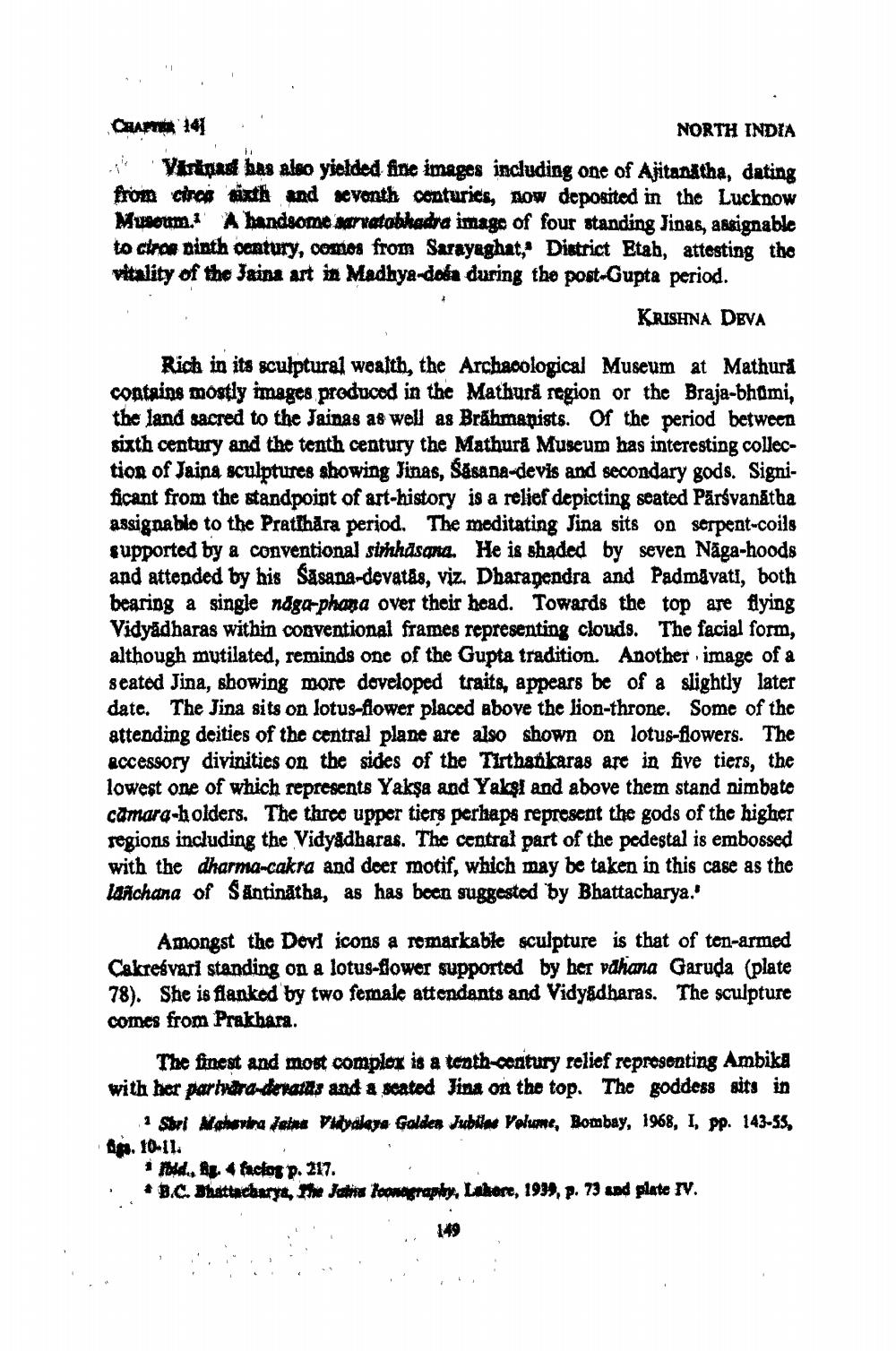________________
NORTH INDIA . Vorinadi has also yielded fine images including one of Ajitanatha, dating from chrom sixth and seventh centurice, now deposited in the Lucknow Mwoum. A handsome narratobhadra image of four standing Jinas, assignable to ctrar ninth century, comos from Sarayaghat," District Etah, attesting the vitality of the Jaina art in Madhya-dosa during the post-Gupta period.
KRISHNA DEVA
Rich in its sculptural wealth, the Archacological Museum at Mathura contains mostly images produced in the Mathuri region or the Braja-bhumi, the land sacred to the Jainas as well as Brahmapists. Of the period between sixth century and the tenth century the Mathura Museum has interesting collection of Jaina sculptures showing Jinas, Sasana-devis and secondary gods. Significant from the standpoint of art-history is a relief depicting seated Pārsvanātha assignable to the Pratthāra period. The meditating Jina sits on serpent-coils supported by a conventional sinhhasana. He is shaded by seven Näga-hoods and attended by his Sásada-devatás, viz. Dharanendra and Padmavati, both bearing a single naga-phana over their head. Towards the top are flying Vidyadharas within conventional frames representing clouds. The facial form, although mutilated, reminds one of the Gupta tradition. Another image of a seated Jina, showing more developed traits, appears be of a slightly later date. The Jina sits on lotus-flower placed above the lion-throne. Some of the attending deities of the central plane are also shown on lotus-flowers. The accessory divinities on the sides of the Tirthatikaras are in five tiers, the lowest one of which represents Yakşa and Yaksi and above them stand nimbate camara-holders. The three upper tiers perhaps represent the gods of the higher regions including the Vidyadharas. The central part of the pedestal is em horsed with the dharma-cakra and deer motif, which may be taken in this case as the lanchana of Santinátha, as has been suggested by Bhattacharya."
Amongst the Devi icons a remarkable sculpture is that of ten-armed Cakreśvari standing on a lotus-flower supported by her vdhana Garuda (plate 78). She is flanked by two female attendants and Vidyadharas. The sculpture comes from Prakhara.
The finest and most complor is a tenth-century relief representing Ambika with her partytrancheratas and a seated Jina on the top. The goddess sits in
a Stori Materina Jatne Poldaya Golden Jubilee Volume, Bombay, 1968, I, pp. 143-55, . 10-11
i mold., . 4 factor p. 217. · *B.C. Bhattacharya, other Jctive iconography, Lebore, 1994, p. 73 and plate IV.




